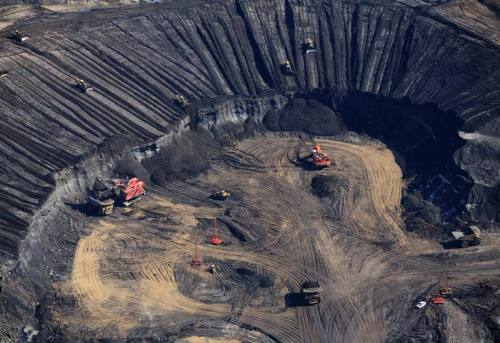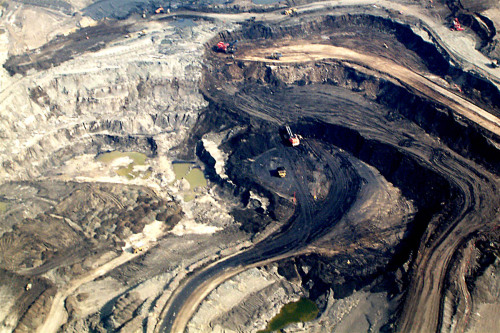tangledwing:Tar Sands Mining Beginning in Utah: Why the U.S. Is Becoming Ground Zero For the Dirties
tangledwing:Tar Sands Mining Beginning in Utah: Why the U.S. Is Becoming Ground Zero For the Dirtiest Energy With all the focus on blocking the Obama administration’s approval of Keystone XL, the general public has mostly missed a project plugging along at 8,000 feet atop the Tavaputs Plateau in Eastern Utah (part of the ever-larger Colorado Plateau), and not far from beloved Arches and Canyonlands national parks. This fall a Canadian company named U.S Oil Sands (formerly Earth Energy Resources) leapt another legal hurdle on its multi-year journey to becoming the first large-scale tar sands mine in the U.S. Local and regional activists have been fighting the development for years, but it has somehow missed the national conversation, which is odd because the potential for tar sands and oil shale development in Utah could be massive.“We don’t want the unconventional fuel industry to gain a foothold on the Colorado Plateau,” said Taylor McKinnon of Grand Canyon Trust [6]. “The U.S. unconventional fuel carbon bomb is bigger than Alberta’s.”What’s at StakeTar sands (also known as oil sands) are rocks that have bitumen (a form of oil) mixed in with sand, clay and water. Tar sands are usually extracted by strip mining an area to remove the rock, then crushing it and using heat, water and chemicals to separate the oil, which is then diluted with other hydrocarbons in order to make it liquid enough to be transported to a refinery. (Sometimes in situ recovery is possible, where steam and chemicals are pumped into underground wells to enable the bitumen to come to the surface.) The process is energy- and water-intensive and the waste massive and dangerous, at least as it has been done in northern Alberta Utah is the primary location of tar sands in the U.S., but oil shale abounds in Utah, Colorado and Wyoming. Oil shale is similar to tar sands, but when heated the rock releases kerogen, an oil-like substance. The presence of oil shale in the West is no secret—Ute Indians referred to it as “rocks that burn [8].” What is new, however, is the economics of bringing these unconventional fuels to market and the green light from Washington.The federal government has approved 132,100 acres of land available for tar sands development in Utah and another 687,000 acres in Utah, Wyoming and Colorado for oil shale. (This is a scaled-back number, thanks to pressure from environmental groups, from what was first proposed in the Bush administration’s 2005 Energy Policy Act.)U.S. Oil Sands (which did not return interview requests) has already dug its shovel into part of 32,000 acres it has leased in the Tavaputs Plateau. The company started a 200-acre test mine and last October it received sign-off from the state to continue its project following approval from the Water Quality Division. The Division’s director, Walt Baker, believed the company didn’t need a groundwater pollution permit. “He concluded that there is no groundwater to pollute in the project site, around 213 acres in the arid high country between Vernal and Moab,” reported [9] Judy Fahys of the Salt Lake Tribune.But the environmental group Living Rivers [10] disagrees. Ironically, the site of the test mine is referred to on U.S. Oil Sands’ website [11] as PR Spring, the name of a nearby freshwater spring. Additionally, Jeremy Miller reported [12] for High Country News in July 2012 that the company actually plans to use groundwater from the site to supply the necessary water for the process. As his HCNcolleague Stephanie Paige Ogburn wrote [13] in October 2012, “Apparently the groundwater is not too deep to drill into as a water source, but still deep enough to be immune from pollution runoff.” The company anticipates that it will produce 2,000 barrels of oil a day once it is ramped up to full production. With a seven-year project lifespan, one estimate [14] puts its contribution to the country’s fuel supply at six hours. The likely devastation of 32,000 acres to supply the country with 6 hours of fuel. So much for just a simple business analysis where costs are measured against benefits. A few people will greatly enhance the wealth they already have and the environmental costs will include land that will look like the lifeless terrain on Mars. -- source link
Tumblr Blog : tangledwing.tumblr.com
#tar sands#environment#energy

